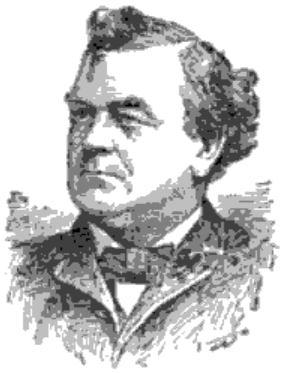John Wesley Turner facts for kids
Quick facts for kids
John Wesley Turner
|
|
|---|---|
 |
|
| Born | July 19, 1833 Saratoga, New York |
| Died | April 8, 1899 (aged 65) St. Louis, Missouri |
| Place of burial |
Calvary Cemetery and Mausoleum, St. Louis, Missouri
|
| Allegiance | United States of America Union |
| Service/ |
United States Army Union Army |
| Years of service | 1851–1871 |
| Rank | |
| Commands held | XXIV Corps |
| Battles/wars | American Civil War |
| Signature | |
John Wesley Turner (born July 19, 1833 – died April 8, 1899) was an important officer in the United States Army. He served during the American Civil War and became a general for the Union Army.
Turner played a big part in the Appomattox Campaign. After the war, during the time called Reconstruction, he was in charge of soldiers in Virginia. After leaving the Army, he lived in St. Louis, Missouri, where he became a respected leader and worked on public projects.
Contents
Early Life and Military Start
John Wesley Turner was born in New York in 1833. When he was 18, he joined the West Point military school. He finished his studies in 1855.
After graduating, he joined the 1st U.S. Artillery. He even fought in the Third Seminole War.
Civil War Service
Early Battles
When the Civil War began, Turner was a first lieutenant. He was quickly promoted to captain. He worked for General David Hunter in Kansas.
Later, he served in the Department of the South. He was very helpful during the Battle of Fort Pulaski.
Fighting in Charleston
On June 13, 1863, Turner became the chief of staff for General Quincy Adams Gillmore in the Department of the South. He helped with the attacks on Charleston, South Carolina in 1863.
For his good work at Battery Wagner, Turner was promoted to Major in the U.S. Army on September 6, 1863. The very next day, he became a brigadier general of U.S. Volunteers.
Petersburg Campaign
In May 1864, General Gillmore's X Corps moved to the Petersburg front. Turner continued as chief of staff during the Bermuda Hundred Campaign.
On June 22, 1864, he took command of the 2nd Division, X Corps. This was his first time leading infantry soldiers. Turner and his division fought in the Siege of Petersburg. They mostly fought north of the James River.
Even though his division was held back at the Battle of the Crater, Turner was still promoted to lieutenant colonel in the U.S. Army. In the winter of 1864-1865, he served as chief of staff for the Army of the James.
Fort Gregg and Appomattox
After Confederate forces were defeated in the Shenandoah Valley, Union troops became available. In March, Turner took command of a new "Independent Division." This division was part of the XXIV Corps, led by General John Gibbon.
Near the end of the Petersburg Campaign, Gibbon's corps was ordered to attack Forts Gregg and Whitworth. Turner's division was split, with some soldiers attacking Fort Whitworth and others joining the main attack on Fort Gregg.
After Petersburg fell, Turner marched with his troops to Appomattox Courthouse. There, he and other soldiers from the Army of the James helped stop Robert E. Lee and the Army of Northern Virginia. This led to Lee's surrender. For his service at Petersburg, Turner was promoted to colonel, brigadier general, and major general in the U.S. Army.
Life After the War
After the war, Turner remained in charge of the XXIV Corps. He was a brevet Major General of Volunteers. He oversaw occupied Virginia until September 1, 1866.
He was in charge of the District of Henrico, Virginia (which included Richmond) from June 1865 to April 1866. He then led the entire Department of Virginia for a short time. Part of his job was to help restart the local government. He also worked to make sure the government took care of law enforcement and helped people who were unemployed. This included former soldiers and formerly enslaved people.
Turner continued as a major general in the U.S. Army until 1871. He commanded a purchasing depot and commissary in St. Louis, Missouri. He left the regular army on September 4, 1871.
In 1869, General Turner married Blanche Soulard. They had two sons and two daughters who lived to adulthood.
After leaving the Army, Turner settled in St. Louis, Missouri. He became a well-known citizen. He worked as a banker and a civil engineer. For over ten years, he served as the commissioner of streets and public works until he passed away.
Death and Legacy
General Turner died in St. Louis in 1899. He was buried in Calvary Cemetery. He was one of the people who helped start Washington University in St. Louis.

